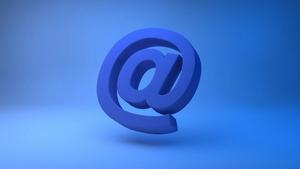Integrated marketing is a strategic approach that unifies your marketing channels, ensuring a consistent brand narrative reaches your target audience.
Each touchpoint, whether it’s a social media ad, a blog post or a personalized email, reinforces your core message and strengthens brand recognition through an integrated marketing approach.
This cohesive approach helps to create trust and loyalty, ultimately leading to better business outcomes.
In this blog post, we’ll delve deeper into the why and how of integrated marketing, its key benefits, whilst also providing a step-by-step guide to developing a successful integrated marketing strategy.
Why use an integrated marketing strategy?
Increased brand awareness
One of the primary reasons to adopt an integrated marketing strategy is the boost in brand awareness.
When all marketing channels work together, any brand message is consistently reinforced, delivering a consistent message that makes it more memorable to the audience.
This consistency helps build a strong brand presence in the market, ensuring potential customers recognize and recall the brand more easily.
Improved customer experience
Integrated marketing also plays a vital role in enhancing the customer experience.
By delivering a cohesive message across multiple channels, businesses can provide a seamless user journey. Whether a customer interacts with the brand through social media, email or in-store, they receive a consistent and unified experience.
This consistency builds trust and credibility, making customers more likely to engage with the brand and develop a long-term relationship.
Measurable results
Another significant advantage of integrated marketing is the ability to measure and analyze the results more effectively.
When marketing efforts are aligned, it's easier to track and evaluate the performance of each channel and tactic. Businesses can use this data to understand what works best, optimize their strategies and make informed decisions.
This data-driven approach not only improves the effectiveness of marketing campaigns but also maximizes the return on investment.
Create a consistent narrative

Part one - Develop a brand voice
Developing a strong brand voice is essential for creating a consistent narrative across all marketing channels.
Your brand voice is the unique tone and style that reflects your company's values and personality.
It should be recognizable and resonate with your target audience, creating an engaging, joined-up experience.
Below, we’ve listed how you can develop a brand voice from scratch.
- Identify core values: What do you stand for? What is your mission? These values should be reflected in your brand voice.
- Understand your audience: Know who you’re speaking to. Tailor your voice to chime with your target audience's preferences and expectations.
- Define tone and style: Decide on the tone (formal, informal, playful, serious) and style (conversational, professional, friendly) of your communication. Be consistent with this across all platforms.
- Create voice guidelines: Document specific guidelines for language, tone and style. Include examples to illustrate the dos and don'ts of your brand voice.
- Be authentic: Ensure your brand voice is genuine and reflects your brand’s true personality. Authenticity builds trust and connection with your audience.
Part two - Create a style guide for consistency
Maintaining consistency across all marketing channels is key to a successful integrated marketing strategy.
Consistency in brand message, visuals and tone ensures that your audience receives a cohesive and unified experience regardless of where they encounter your brand. If you don’t already have a style guide, below are some tips to get you started.
- Outline visual elements: Specify the use of logos, color schemes, fonts and imagery. Include examples of correct and incorrect usage to avoid confusion.
- Detail messaging guidelines: Provide guidelines on the key messages your brand communicates. Include specific phrases or taglines to ensure uniformity.
- Establish tone and voice rules: Reiterate your brand voice guidelines. Explain how the tone might vary slightly depending on the platform (e.g., more formal on LinkedIn, more conversational on Twitter).
- Include content templates: Offer templates for common content types like emails, social media posts and blog articles. This helps ensure visual and messaging consistency.
- Create a review process: Implement a process for regularly reviewing and updating the style guide. As your brand evolves, your style guide should too.
- Train your team: Conduct training sessions for your marketing team and partners to ensure they understand and can implement the style guide effectively.
Choose your marketing channels and set goals for each one
Not every channel will be suitable for your business, so it’s important to strategically choose those that align with your audience’s preferences and your marketing goals. By doing so, you can ensure that your efforts are focused and effective.
Incorporating digital marketing into your strategy is essential for achieving consistent messaging and providing a seamless experience across various channels.

Identify relevant channels
To identify the right marketing channels, consider the demographics of your audience and where they are most likely to engage with your brand. Common marketing channels include:
- Social media: Facebook, Instagram, LinkedIn, YouTube, TikTok and Twitter are the biggest platforms for engaging with audiences and building brand awareness.
- Email marketing: Directly reaching your audience through personalized emails can drive conversions and nurture customer relationships.
- Content marketing: Creating valuable content with our new AI Content Assistant such as blog posts, white papers, videos and infographics helps attract and engage your target audience.
- SEO (search engine optimization): Optimizing your website and content for search engines increases organic visibility and attracts more traffic.
- PPC (pay-per-click advertising): Running ads on platforms like Google Ads and social media helps drive targeted traffic and leads.
- Traditional advertising: TV, radio, print and outdoor ads can reach a broad, mainstream audience.
- Podcasting: Producing podcasts to share insights, stories and interviews can build a loyal following and enhance brand authority.
- Influencer marketing: Partner with influencers to promote your brand to their followers by harnessing their credibility and reach.
- Direct marketing: Utilizing direct marketing channels such as mail, telemarketing, and SMS can create a cohesive and impactful experience for consumers within an integrated marketing strategy.
Align goals with target audience and channel strengths
Once you've identified the relevant channels, it's essential to set specific goals for each one.
Match these goals with your overall marketing objectives and the advantages of each channel. For example, if your goal is to increase brand awareness, you might focus on social media and content marketing to reach a broader audience.
If your goal is to generate leads, email marketing and PPC campaigns might be more effective.
Examples of measuring channel goals
Measuring the success of each marketing channel will help you understand what works and what needs improvement. Below are some examples of metrics you can use to gauge whether each channel's goals have been achieved.
- Social media: Track metrics such as follower growth, engagement rates (likes, comments, shares), and reach.
- Email marketing: Measure open rates, click-through rates, conversion rates and unsubscribe rates.
- Content marketing: Monitor page views, average time on page, social shares, and conversion rates from content pieces.
- SEO: Analyze organic traffic, keyword rankings, bounce rates, and conversion rates from organic search.
- PPC: Evaluate click-through rates (CTR), cost per click (CPC), conversion rates, and return on ad spend (ROAS).
- Podcasting: Look at download numbers, listener demographics, and engagement through social media mentions and reviews.
- Influencer marketing: Assess reach, engagement metrics on influencer posts, and traffic or sales generated from influencer campaigns.
Ensure that each channel's goals are measurable and achievable, and regularly review and adjust them based on performance data. By doing so, you can optimize your integrated marketing strategy and achieve better results.

Benefits of integrated marketing techniques
Integrated marketing offers numerous advantages, enhancing both the effectiveness and efficiency of your marketing efforts.
Successful integrated marketing campaigns align various marketing channels to promote products or services cohesively, ensuring cost-efficiency and strong brand messaging.
Increased ROI
By unifying your marketing strategies across various channels, you create a cohesive message that resonates with your audience.
This consistency reduces redundancy, ensuring every dollar spent on marketing works harder to generate leads and drive conversions. When your marketing efforts are aligned, they reinforce each other, amplifying their impact and maximizing the value of your investment.
Streamlined workflows
When everyone is working towards the same goals with a unified strategy, it reduces confusion and inefficiencies.
Streamlined workflows mean that marketing campaigns can be executed more smoothly and economically, saving time, money and resources.
Teams can share insights and data more easily, leading to better decision-making and more agile responses to market changes.
Data-driven decision making
By collecting and analyzing data from all marketing channels, you gain a comprehensive view of your audience’s behavior and preferences.
This holistic perspective allows you to identify trends, measure the effectiveness of different strategies, and optimize your campaigns in real-time.
Data-driven decision-making ensures your marketing efforts are based on evidence rather than guesswork, leading to more accurate targeting and improved results.
How to develop a successful integrated marketing strategy
Crafting a successful marketing strategy requires careful planning and execution. Yet, with integrated marketing, the focus goes beyond just developing a strong plan for each channel. It is crucial to involve marketing and sales teams to ensure alignment and effective execution of the strategy. Below we’ve listed how you can develop a successful integrated marketing strategy.

Define your target audience
The first step is understanding your ideal customer.
Develop detailed buyer personas that capture their demographics, interests and online behavior. This understanding becomes the cornerstone for integrating your marketing efforts.
Ensure your buyer personas inform messaging and visuals across all channels. For instance, the tone of voice you use in social media posts should align with the language in your email campaigns.
While maintaining consistency in brand voice, tailor content formats to suit each platform. Informative blog posts might be ideal for your website, while catchy visuals and concise captions work well on Instagram.
Set SMART goals with integration in mind
SMART goals (Specific, Measurable, Achievable, Relevant, and Time-bound) provide direction and focus for your marketing strategy. The key here is to set goals to consider the interplay between different channels.
Don't get bogged down in individual channel targets. Set overarching goals that consider the cumulative impact of your integrated marketing efforts.
For example, aim to achieve a specific brand awareness increase or website traffic growth through combined efforts across social media, email marketing and content marketing.
Use marketing analytics tools that allow you to track the impact of one channel on another. For instance, see how social media campaigns drive traffic to your website or how email marketing re-engages website visitors who haven't converted.
Choose the right channels for integrated impact
Don't feel pressured to be on every single marketing channel. The key is to select a strategic mix that aligns with your target audience and overall goals.
Consider how different channels can work together. For example, social media posts can promote blog content, while email newsletters can highlight upcoming webinars or social media contests.
Focus on where your audience spends their time. Conduct surveys or engage with your customers directly to understand their preferred platforms. This insight will help you prioritize the most effective channels.
Assess your available resources, such as budget and team capacity. It's better to excel on a few channels than to stretch thinly across many. Concentrate your efforts where you can achieve the most impact.

Tips for getting started on an integrated marketing strategy
- Start small: Begin with a few key channels and gradually expand your efforts as you gain confidence and resources.
- Stay organized: Use project management tools to keep track of your campaigns, deadlines and progress.
- Foster collaboration: Encourage communication and collaboration among your marketing team to ensure alignment.
- Make the most of technology: Use marketing automation tools to streamline tasks and improve efficiency.
- Stay flexible: Be prepared to adapt your strategy based on feedback and performance data.
- Utilize social media channels: Repurpose content across different social media platforms to maintain consistency in messaging and maximize brand awareness.
Common mistakes to avoid
- Lack of consistency: Ensure that your messaging, visuals and tone are consistent across all channels to avoid confusing your audience.
- Overcomplicating your strategy: Keep your strategy simple and focused. Too many channels or overly complex tactics can dilute your efforts and lead to inefficiencies.
- Neglecting the customer journey: Consider the entire customer journey in your strategy, from awareness to conversion and beyond. Ensure that each touchpoint provides a seamless and engaging experience.
Unleash the power of integrated marketing with Capsule CRM
Capsule acts as your central hub, storing all your customer information – website interactions, email preferences and more – in one easily accessible location. This eliminates data silos and ensures consistent brand messaging across all channels.
Capture leads from diverse sources, including social media, website forms and email campaigns. Capsule keeps everything organized, allowing you to nurture leads effectively and move them smoothly through the sales pipeline. No more struggling to track leads – Capsule simplifies the process.
Gain valuable insights into marketing performance with Capsule. See which campaigns generate the most leads, which convert leads into customers, and which areas need improvement. This data empowers you to optimize campaigns, maximize ROI, and continuously refine your integrated marketing strategy.
By integrating all your marketing data under one roof, you can identify customer patterns, personalize outreach, and build stronger relationships. This holistic view enables you to craft a truly integrated marketing strategy that connects with your audience and drives business growth.
Ready to experience the power of integrated marketing? Try Capsule CRM free today and unlock the full potential of your marketing efforts.
FAQs
Integrated marketing focuses on delivering a consistent and cohesive brand message across all marketing channels. It ensures that all campaigns, regardless of the platform, work together harmoniously.
Multi-channel marketing, on the other hand, involves using various platforms to reach a broader audience but doesn’t necessarily focus on maintaining a unified message. Integrated marketing aims for synergy and coherence, while multi-channel marketing may sometimes lack this coordinated approach.
Small businesses can greatly benefit from integrated marketing by maximizing the impact of their marketing efforts without requiring large budgets. By unifying their brand message and ensuring consistency across all channels, small businesses can build stronger brand recognition and trust. Integrated marketing helps in efficiently using resources, reducing duplication of efforts, and providing a clear and consistent customer experience, which is crucial for building loyalty and driving growth.
Absolutely. Integrated marketing is highly effective in B2B marketing because it allows businesses to create a unified and professional brand image, which is crucial for building trust and credibility with other businesses. By ensuring that all marketing efforts are aligned and consistent, B2B companies can effectively communicate their value proposition, nurture leads, and build long-term relationships with their clients.
Integrated marketing improves customer experience by providing a seamless and consistent journey across all touchpoints. When customers receive the same message and quality of service, whether they are interacting with your brand on social media, visiting your website, or reading an email, it builds trust and enhances satisfaction. This cohesive experience makes it easier for customers to understand your brand's value proposition and encourages loyalty.
Brand identity is vital in integrated marketing as it forms the foundation of your messaging and visual elements. A strong brand identity ensures that all communications are aligned and recognizable, which helps to build trust among your audience. Consistent use of logos, colors, fonts and tone of voice across all marketing materials reinforces your brand’s image and makes it more memorable.




